This article was co-authored by Shervin Eshaghian, MD. Dr. Shervin Eshaghian is a Board Certified cardiologist and the owner of Beverly Hills Cardiology based in the Los Angeles, California metro area. Dr. Eshaghian has over 13 years of cardiology experience, including serving on the medical staff at Cedars-Sinai Medical Center. He holds a BS in Psycho-Biology from the University of California, Los Angeles (UCLA) and an MD from the Albert Einstein College of Medicine. Furthermore, Dr. Eshaghian completed an internship, residency, and fellowship at Cedars Sinai Medical Center, where he was awarded the Leo Rigler Outstanding Academic Achievement Award and the Elliot Corday Fellow of the Year Award.
There are 14 references cited in this article, which can be found at the bottom of the page.
This article has been viewed 29,576 times.
There are certain risk factors that affect your chances of developing heart disease. Some of these factors are beyond your control, such as getting older, being male, or having a family history of heart disease; however, other factors you may be able to control, including high blood pressure, high cholesterol, obesity, your amount of physical activity, and whether or not you smoke. In order to calculate your risk of developing heart disease, you will need to look at several different parameters and calculate the correlating numbers. You will then add up your score to see how it reflects to your risk of developing heart disease.
Steps
Calculating Risk Factors
-
1Visit your doctor for a physical and lab work. In order to calculate your risk of developing heart disease, you will have to test certain aspects of your health. Your doctor should be able to do this during a normal appointment. She will also draw a sample of your blood and test the levels of certain substances.[1]
- One thing that your doctor will measure is your blood pressure. Blood pressure is the strength that your blood exerts on the inside walls of veins and arteries as it flows through the body. If it is too high, the blood puts extra stress on your heart and arteries, creating a higher risk for heart attack or stroke.[2]
- Your doctor may also take a sample of your blood and send it off to the lab. One thing that she should look for is your blood glucose level — that is, your amount of blood sugar. A normal blood glucose level is 7.8 mmol/L (140 mg/dL) two hours after eating. Higher levels — 11.1 mmol/l or more (200 mg/dl or more) after eating— can indicate diabetes.[3] (Target levels will be different if you take the test while fasting.)
- The blood sample will also test your LDL and HDL cholesterol levels. LDL is "bad" cholesterol that builds up in the arteries, while HDL is "good" cholesterol that acts as a kind of janitor, helping the body to process bad cholesterol. A healthy LDL level is generally below 100 mg/dL, while a healthy HDL is around 40 mg/dL.[4]
-
2Consider your age. Heart disease is relatively uncommon in people younger than 30 years old but the risk increases with age for both men and women. Women run a slightly lower risk of heart disease than men of the same age group.[5]
- Calculate for your age. Add or subtract from a baseline of zero. If you are male, subtract 1 point if you are between 30 and 34 years of age. Add one point for every 5 years. That is, if you are between 65 and 69 years of age, add 6 points. The highest age group (70 to 74 year olds) should add 7 points.
- If you are female, subtract 9 points from a baseline of zero if you are between 30 and 34 years of age. Subtract 4 for 35 to 39 and 0 for 40 to 44. Add 3 points for 45 to 49, 6 for 50 to 54, 7 for 55 to 59 and 8 for 60 to 74 years.
Advertisement -
3Add in your LDL levels. LDL cholesterol are lipids that are bad for your heart and blood vessels. They are deposited on the walls of your coronary arteries (blood vessels in the heart) and cause plaque to form. This plaque impedes blood flow and can lead to heart disease.[6]
- Continue to add or subtract from your answers above. If you are male, subtract 3 points if your LDL level is below 100 mg/dL. Similarly, add 0 points for 100 to 159 mg/dL, 1 for 160 to 190 mg/dL, and 2 for more than 190 mg/dL.
- If you are female, subtract 2 points if your LDL level is below 100 mg/dL. Add 0 points for 100 to 159 mg/dL and 2 for more than 160 mg/dL.
-
4Factor in HDL cholesterol. HDL cholesterol is known as good cholesterol because it helps to lower your risk of cardiovascular diseases. It is considered “good” because it transports bad lipids back to the liver, where they are flushed from the body.[7]
- If you are male, add 2 points if your HDL level is below 35 mg/dL. Similarly, add 1 point for 35 to 44 mg/dL, 0 for 45-59 mg/dL, and subtract 1 point for more than or equal to 60 mg/dL.
- If you are female, add 5 points if your HDL level is below 35 mg/dL. Similarly, add 2 for 35 to 44 mg/dL, 1 for 45 to 49 mg/dL, 0 for 50 to 59 mg/dL, and subtract 2 for more than or equal to 60 mg/dL.
-
5Consider your blood pressure as it relates to heart disease. High blood pressure is a major risk factor for coronary heart disease. Blood pressure has two values: the upper value is called “systolic pressure” and the lower value “diastolic pressure.” The ideal blood pressure for adults is less than 120/80 mm-Hg (120 for systolic and 80 for diastolic). Blood pressure that is more than 140/90 is called hypertension. The target blood pressure for people who have diabetes, hypertension and chronic kidney disease is even lower.[8]
- Add 0 points if you are male and your blood pressure is less than 130/85. Add 1 for a reading of 130/85 – 139/89. Add 2 for a reading of 140/90 – 159/99. Add 3 for pressure of more than or equal to 160/100.
- If you are female, subtract 3 points if your blood pressure is less than 120/80. Add 0 points for a reading 120/80 – 139/89. Add 2 for systolic pressure 140/90 – 159/99. And add 3 for blood pressure more than or equal to 160/100.
- Take the higher reading if your systolic and diastolic pressures fall in different ranges. For example, if you are male and your systolic pressure is 170/90, add 3 points rather than 2.
-
6Account for possible diabetes. Diabetes is strongly related to heart disease. In fact, diabetics are twice as likely as non-diabetics to develop heart disease at some point in their lifetime. This is partly because diabetics are more likely to also have high blood pressure, while elevated blood sugar levels increase fatty deposits and plaque in the arteries and the risk of clogging.[9]
- If you do not have diabetes, add 0 points (either male or female).
- If you have diabetes or take anti-diabetic drugs, add if you are male and 4 points if you are female.
Subtracting for Protective Factors
-
1Exercise regularly. Some behaviors like exercise can give you moderate protection against heart disease. Being physically active can lower your blood pressure, help to lower your cholesterol levels, and reduce your chance of having a heart attack or stroke. Doctors recommend that you aim for at least 30 minutes of moderate exercise (i.e. walking, light aerobics) five times per week or 25 minutes of vigorous exercise (running, basketball, cycling) three days per week. In addition, they recommend moderate to intense strength training two days per week.[10]
- Subtract 1 point if you are male or female and meet the recommended guidelines. Add 1 point if you do not.
-
2Stop smoking. Smoking is not only terrible for your lungs but also increases your chances of getting heart disease. Chemicals in tobacco directly damage heart muscle and blood vessels, while smoking in general promotes atherosclerosis, lowers HDL cholesterol, and raises blood pressure.[11]
- Add 0 points if you are male or female and a non-smoker. Add 2 points if you are a smoker. Consider yourself a smoker if you have smoked even one cigarette, cigar, or pipe of tobacco in the previous month.
-
3Factor in diet. Diet is another mildly protective factor against heart disease. Put simply, the foods that you eat can control blood pressure, diabetes, weight gain, and high cholesterol. For the best results, try to eat a diet rich in vegetables, fruits, whole grains, and lean proteins like fish, chicken, and beans. Avoid sugars, refined carbohydrates, and red meat.[12] Make sure to get plenty of fiber, as well. Soluble fiber, found in foods like oatmeal, is known to reduce “bad” cholesterol in the blood stream.[13]
- The American Heart Association has heart healthy guidelines.[14] Check these and subtract 1 point if you meet them (either male or female). Add one point if you do not.
Assessing the Results
-
1Add up your points. You have now scored all of the parameters for risk and prevention. Add up your points from the previous sections and see your final score.
- For example, if you are a 62 year old woman (8 points), regular exerciser (-1 points) with healthy diet (-1 points), non-smoker (0 point), diabetic (4 points) with blood pressure 130/80 (0 point), HDL level 45 mg/dL (1 point) and LDL level 140 mg/dL (0 point), your final score will be 8-1-1+0+4+0+1+0= 11.
- If you are a 48 year old male (2 points) who does not exercise (1 point), smokes (2 points), eats poorly (1 point), has diabetes (4 points), and has a blood pressure of 160/100 (3 points), HDL of 20 mg/dL (2 points) and LDL of 220 mg/dL (2 points), your score will be 2+1+2+1+4+3+2+2=17.
-
2Calculate your risk of heart disease if you are male. Take your point total and then find the corresponding percentage. This percentage represents the risk that you have of developing heart disease or of experiencing a cardiac event in the next 10 years. The points-risk relationship is different for males and females.[15]
- If you are a male, a point total of less than -3 represents a 1% risk of heart disease in the next 10 years. Similarly, you have a 2% risk for -2 or -1 points, 3% risk for 0 points, 4% for 1 or 2 points, 6% for 3 points, 7% for 4 points, 9% for 5 points, 11% for 6 points, 14% for 7 points, 18% for 8 points, 22% for 9 points, 27% for 10 points, 33% for 11 points, 40% for 12 points, 47% for 13 points, and more than 56% for 14 points or more.
- Our 48 year old male, for example, has a score of 17. This means that his 10 year risk is more than 56%. In other words, more than 56 people out of 100 with a similar score will have a heart attack or cardiac event in the next 10 years.
-
3Calculate your risk if you are female. If you are a female, a total point score of less than -2 points represents a 1% risk of heart disease in the next 10 years. Similarly, you have a 2% risk for -1, 0 or 1 point, 3% for 2 or 3 points, 4% for 4 points, 5% for 5 points, 6% for 6 points, 7% for 7 points, 8% for 8 points, 9% for 9 points, 11% for 10 points, 13% for 11 points, 15% for 12 points, 17% for 13 points, 20% for 14 points, 24% for 15 points, 27% for 16 points, and more than 32% for 17 points or more.
- Our 62 year old female has a score of 11. This means that she runs a 13% ten year risk of heart disease. So, 13 out of 100 with a similar score will experience a heart attack or other cardiac event in the next ten years.
-
4Make changes to lower your risk. If you have a 20% or higher chance of having a heart condition in the next 10 years, you should seriously consider making some lifestyle changes. While you cannot control your age, you can control many of the other parameters. For example, if you have high LDL cholesterol you can reduce your cholesterol by exercising regularly and taking lipid lowering drugs like statins.
- Talk to your doctor about heart health, even if you got a fairly good score. She will be able to recommend ways in which you can improve, including quitting smoking, controlling your blood pressure, eating and exercising better, or lowering your bad cholesterol.
- Your doctor may want to perform further tests, like checking markers in your blood that are associated with a higher risk of heart attack or stroke, or using radiological imaging tools to see whether they're cholesterol plaque buildup in your arteries.[16]
Daily Heart Health Journal Entry Template
Expert Q&A
-
QuestionI always perspire and it often feels as though I'm short of breath. Are these symptoms of hypertension?
 Chris M. Matsko, MDDr. Chris M. Matsko is a retired physician based in Pittsburgh, Pennsylvania. With over 25 years of medical research experience, Dr. Matsko was awarded the Pittsburgh Cornell University Leadership Award for Excellence. He holds a BS in Nutritional Science from Cornell University and an MD from the Temple University School of Medicine in 2007. Dr. Matsko earned a Research Writing Certification from the American Medical Writers Association (AMWA) in 2016 and a Medical Writing & Editing Certification from the University of Chicago in 2017.
Chris M. Matsko, MDDr. Chris M. Matsko is a retired physician based in Pittsburgh, Pennsylvania. With over 25 years of medical research experience, Dr. Matsko was awarded the Pittsburgh Cornell University Leadership Award for Excellence. He holds a BS in Nutritional Science from Cornell University and an MD from the Temple University School of Medicine in 2007. Dr. Matsko earned a Research Writing Certification from the American Medical Writers Association (AMWA) in 2016 and a Medical Writing & Editing Certification from the University of Chicago in 2017.
Family Medicine Physician Feeling short of breath is normally a side effect of heart disease. Check with your doctor for a diagnosis.
Feeling short of breath is normally a side effect of heart disease. Check with your doctor for a diagnosis. -
QuestionIn 2012 I suffered CHF, double pneumonia and a collapsed respiratory system, which I was not expected to survive. The cardiologist found that I maybe needed a splint put in. Am I going to have CHF again? No history of any heart disease, just a slight, periodic murmur.
 Chris M. Matsko, MDDr. Chris M. Matsko is a retired physician based in Pittsburgh, Pennsylvania. With over 25 years of medical research experience, Dr. Matsko was awarded the Pittsburgh Cornell University Leadership Award for Excellence. He holds a BS in Nutritional Science from Cornell University and an MD from the Temple University School of Medicine in 2007. Dr. Matsko earned a Research Writing Certification from the American Medical Writers Association (AMWA) in 2016 and a Medical Writing & Editing Certification from the University of Chicago in 2017.
Chris M. Matsko, MDDr. Chris M. Matsko is a retired physician based in Pittsburgh, Pennsylvania. With over 25 years of medical research experience, Dr. Matsko was awarded the Pittsburgh Cornell University Leadership Award for Excellence. He holds a BS in Nutritional Science from Cornell University and an MD from the Temple University School of Medicine in 2007. Dr. Matsko earned a Research Writing Certification from the American Medical Writers Association (AMWA) in 2016 and a Medical Writing & Editing Certification from the University of Chicago in 2017.
Family Medicine Physician With all of these comorbid conditions and the fact that you have a heart murmur it is possible to have CHF, but certainly it would not be as severe.
With all of these comorbid conditions and the fact that you have a heart murmur it is possible to have CHF, but certainly it would not be as severe. -
QuestionHow does a doctor determine a person's risk of heart disease?
 Shervin Eshaghian, MDDr. Shervin Eshaghian is a Board Certified cardiologist and the owner of Beverly Hills Cardiology based in the Los Angeles, California metro area. Dr. Eshaghian has over 13 years of cardiology experience, including serving on the medical staff at Cedars-Sinai Medical Center. He holds a BS in Psycho-Biology from the University of California, Los Angeles (UCLA) and an MD from the Albert Einstein College of Medicine. Furthermore, Dr. Eshaghian completed an internship, residency, and fellowship at Cedars Sinai Medical Center, where he was awarded the Leo Rigler Outstanding Academic Achievement Award and the Elliot Corday Fellow of the Year Award.
Shervin Eshaghian, MDDr. Shervin Eshaghian is a Board Certified cardiologist and the owner of Beverly Hills Cardiology based in the Los Angeles, California metro area. Dr. Eshaghian has over 13 years of cardiology experience, including serving on the medical staff at Cedars-Sinai Medical Center. He holds a BS in Psycho-Biology from the University of California, Los Angeles (UCLA) and an MD from the Albert Einstein College of Medicine. Furthermore, Dr. Eshaghian completed an internship, residency, and fellowship at Cedars Sinai Medical Center, where he was awarded the Leo Rigler Outstanding Academic Achievement Award and the Elliot Corday Fellow of the Year Award.
Board Certified Cardiologist The methods have changed over time. We used to rely mainly on markers, which are molecules that are found in the blood that are associated with a higher incidence of developing a heart attack or stroke. As of about 10-15 years ago, we started using radiological tools where we can actually look at the arteries inside the heart non-invasively, meaning we don't have to put a catheter in your heart.
The methods have changed over time. We used to rely mainly on markers, which are molecules that are found in the blood that are associated with a higher incidence of developing a heart attack or stroke. As of about 10-15 years ago, we started using radiological tools where we can actually look at the arteries inside the heart non-invasively, meaning we don't have to put a catheter in your heart.
References
- ↑ http://circ.ahajournals.org/content/97/18/1837.full.pdf
- ↑ http://www.bloodpressureuk.org/BloodPressureandyou/Thebasics/Bloodpressure
- ↑ http://www.diabetes.co.uk/diabetes_care/blood-sugar-level-ranges.html
- ↑ http://www.heart.org/HEARTORG/Conditions/Cholesterol/AboutCholesterol/Good-vs-Bad-Cholesterol_UCM_305561_Article.jsp#.VjtXdW4mBBk
- ↑ https://www.heartfoundation.org.au/heart-health-education/are-you-at-risk-of-heart-disease
- ↑ http://www.cdc.gov/cholesterol/ldl_hdl.htm
- ↑ http://www.cdc.gov/cholesterol/ldl_hdl.htm
- ↑ http://www.bloodpressureuk.org/BloodPressureandyou/Thebasics/Bloodpressurechart
- ↑ https://www.cdc.gov/diabetes/library/features/diabetes-and-heart.html
- ↑ http://www.heart.org/HEARTORG/GettingHealthy/PhysicalActivity/FitnessBasics/American-Heart-Association-Recommendations-for-Physical-Activity-in-Adults_UCM_307976_Article.jsp#.VjtddG4mBBk
- ↑ https://www.nhlbi.nih.gov/health-topics/smoking-and-your-heart
- ↑ http://www.heart.org/HEARTORG/Conditions/HeartAttack/PreventionTreatmentofHeartAttack/Lifestyle-Changes_UCM_303934_Article.jsp#.VjtfJm4mBBl
- ↑ http://www.bd.com/us/diabetes/page.aspx?cat=7001&id=7491
- ↑ http://www.webmd.com/heart-disease/tc/american-heart-association-healthy-diet-guidelines-topic-overview
- ↑ http://circ.ahajournals.org/content/97/18/1837.full.pdf
- ↑ Shervin Eshaghian, MD. Board Certified Cardiologist. Expert Interview. 26 June 2020.


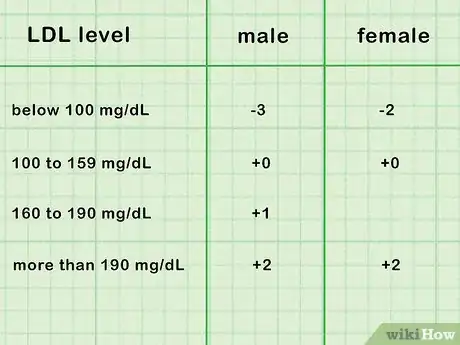
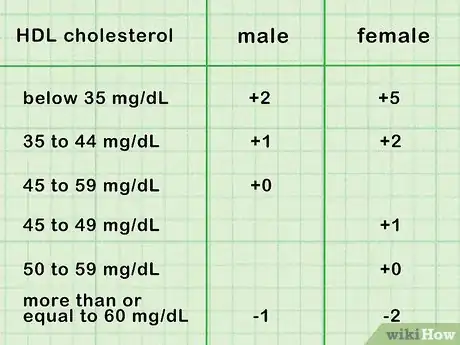
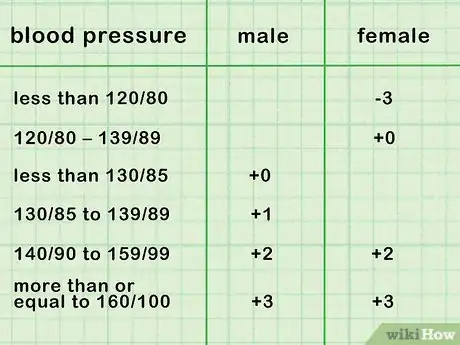
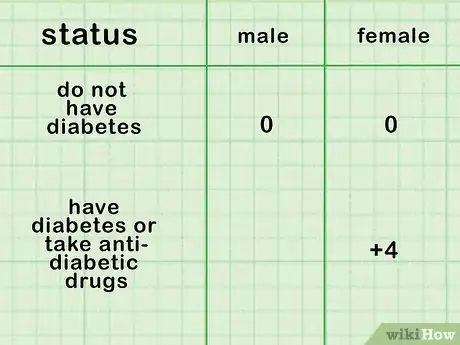



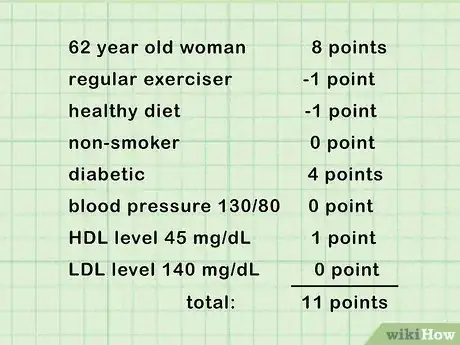
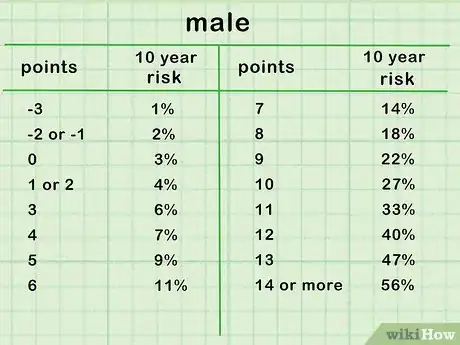
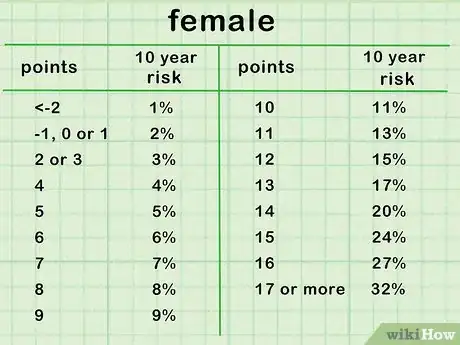


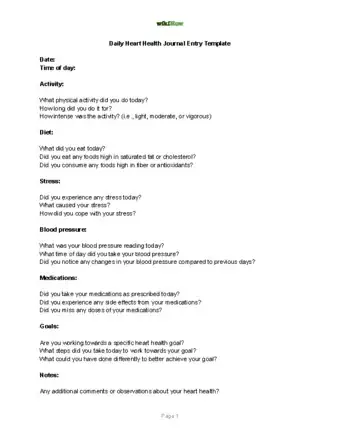




-Step-16.webp)










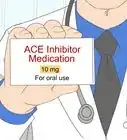






































Medical Disclaimer
The content of this article is not intended to be a substitute for professional medical advice, examination, diagnosis, or treatment. You should always contact your doctor or other qualified healthcare professional before starting, changing, or stopping any kind of health treatment.
Read More...